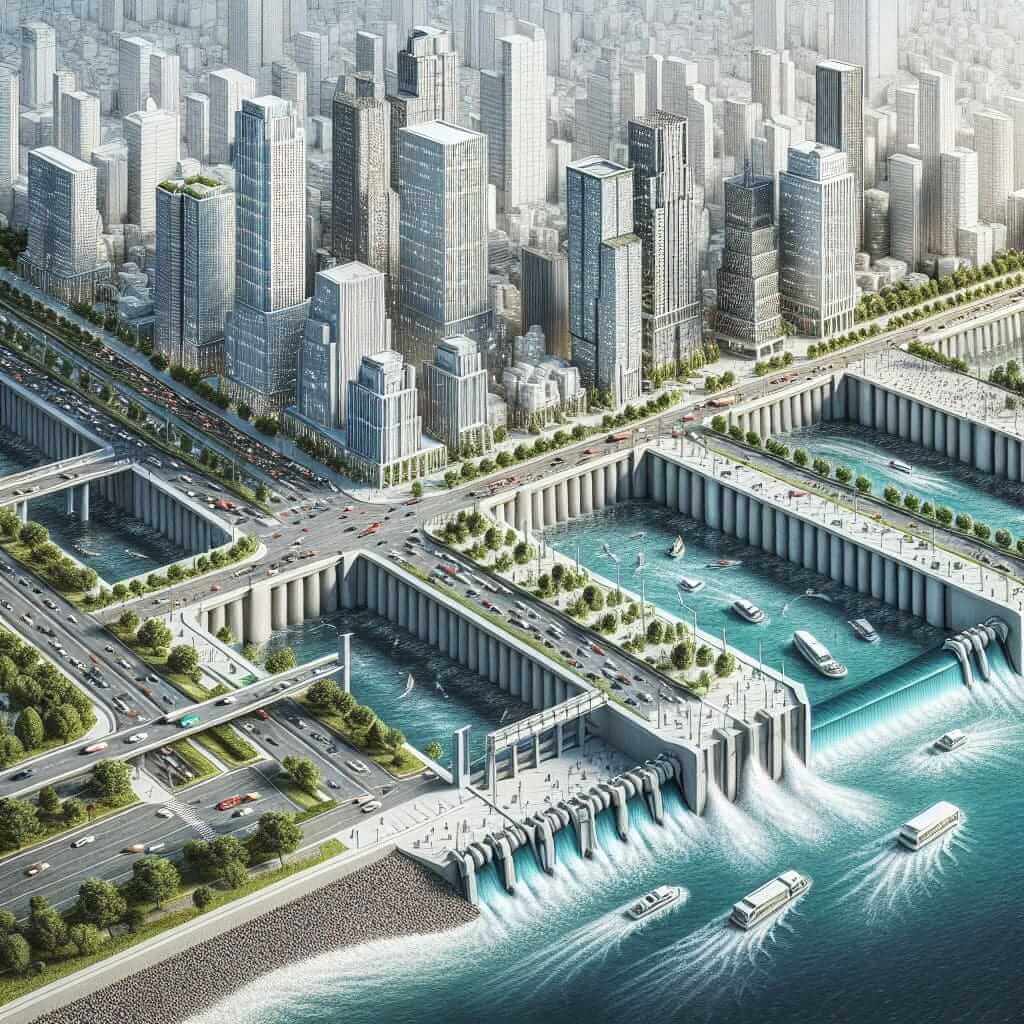Introduction
Climate resilience in urban areas is a pertinent topic in the realm of urban planning and environmental conservation. As cities around the world face increasing threats from climate change, the ability to withstand and recover from these impacts becomes crucial. This topic has appeared in various forms in past IELTS Writing Task 2 exams and is expected to gain more prominence in future iterations, given the growing awareness and urgency surrounding climate change.
Let’s delve into the core elements of this topic by reviewing a specific IELTS Writing Task 2 prompt from past exams and creating a model essay. Additionally, we will provide insights and vocabulary tips for tackling this topic effectively.
Past IELTS Writing Task 2 Prompt on Climate Resilience
A past IELTS Writing Task 2 prompt closely related to our topic is:
“Many cities around the world are facing the dire consequences of climate change. Discuss the measures that can be taken to build climate resilience in urban areas.”
Analysis of the Prompt
This prompt requires candidates to discuss measures that can help cities become more resilient to climate change. It expects an analytical approach, focusing on practical solutions. Candidates should structure their essays to address different aspects of climate resilience, provide relevant examples, and support arguments with evidence or case studies.
Model Essay: Climate Resilience in Urban Areas
“Many cities around the world are facing the dire consequences of climate change. Discuss the measures that can be taken to build climate resilience in urban areas.”
Climate change poses significant challenges to urban areas, manifesting in extreme weather events, rising sea levels, and increased temperatures. Addressing these issues requires concerted efforts to build climate resilience in cities. This essay discusses several measures that cities can implement to enhance their resilience against the impacts of climate change.
Firstly, improving urban infrastructure is crucial. Cities should invest in resilient infrastructure, such as flood barriers and green roofs. For instance, the installation of permeable pavements can assist with effective stormwater management, reducing the risk of flooding. Additionally, cities like Rotterdam have retrofitted buildings with green roofs, which help absorb rainwater and reduce urban heat islands.
 Flood Barriers in Urban Areas
Flood Barriers in Urban Areas
Secondly, enhancing public transportation can reduce greenhouse gas emissions, a significant contributor to climate change. Promoting the use of electric buses and expanding metro systems can decrease reliance on fossil fuels. A city like Copenhagen, known for its extensive cycling infrastructure, exemplifies how sustainable transportation can mitigate environmental impact.
Thirdly, urban planning should incorporate natural elements to improve resilience. Integrating parks, green corridors, and urban forests can help manage heat and improve air quality. For example, Singapore’s extensive network of green spaces blends urban living with nature, providing a blueprint for other cities to follow.
Moreover, fostering community engagement and awareness is vital. Educating citizens about the importance of climate resilience and encouraging sustainable practices can drive collective action. Initiatives such as community gardens and citizen science projects empower residents to contribute actively to environmental conservation.
Finally, leveraging technology and data can enhance resilience strategies. The use of predictive modeling and real-time monitoring systems can help cities anticipate and respond to climate-related threats promptly. Smart cities employing IoT (Internet of Things) technologies can monitor air quality, traffic patterns, and energy consumption to optimize urban living conditions.
In conclusion, building climate resilience in urban areas necessitates a multifaceted approach involving infrastructure improvements, sustainable transportation, green urban planning, community engagement, and technological integration. By adopting these measures, cities can better withstand and recover from the adverse effects of climate change, ensuring a sustainable future for their inhabitants.
Word Count: 368
Writing Tips for This Topic
-
Vocabulary and Expressions:
- Use specific terms like “urban heat island,” “sustainable transportation,” “green infrastructure,” and “predictive modeling.”
- Deploy transitional phrases like “Firstly,” “Secondly,” “Moreover,” and “In conclusion” to structure your essay clearly.
-
Grammar and Sentence Structure:
- Use complex sentences to demonstrate a higher level of English proficiency.
- Incorporate passive voice where appropriate to add variety to sentence structures.
-
Examples and Evidence:
- Mention real-world examples like Rotterdam’s flood barriers and Singapore’s green spaces to support your arguments.
- Use case studies and relevant statistics where applicable.
Important Vocabulary to Remember
Here are some key terms and phrases used in the model essay:
- Infrastructure (noun) /ˈɪnfrəstrʌktʃər/: The basic physical systems and structures needed for the operation of a city.
- Permeable (adjective) /ˈpɜrmiəbəl/: Allowing liquids or gases to pass through.
- Urban Heat Island (noun phrase): A metropolitan area that is significantly warmer than its surrounding rural areas due to human activities.
- Foster (verb) /ˈfɔstər/: To promote the development or growth of something.
- Predictive Modeling (noun phrase): The process of using statistical techniques to predict future outcomes based on historical data.
Conclusion
Addressing climate resilience in urban areas is pivotal for managing the adverse impacts of climate change. As seen in our model essay, discussing practical measures such as infrastructure improvement, enhanced transportation, and community engagement can significantly bolster the resilience of urban environments. Future IELTS candidates should also be prepared for similar prompts, as the relevance of this topic is bound to increase. Potential prompts may include:
- “Discuss the impact of urban heat islands on public health and suggest measures to mitigate them.”
- “Analyze the role of urban planning in building climate resilience in cities.”
By honing their writing skills on these topics, candidates will be well-prepared to tackle any IELTS Writing Task 2 prompt on climate resilience.
Related Readings:
- The Effects of Urban Heat Islands on Public Health
- The Importance of Climate Resilience in Urban Planning
- The Effects of Climate Change on Urban Infrastructure
This essay and the accompanying analysis have been crafted to help IELTS candidates understand and effectively respond to topics regarding climate resilience in urban areas.


